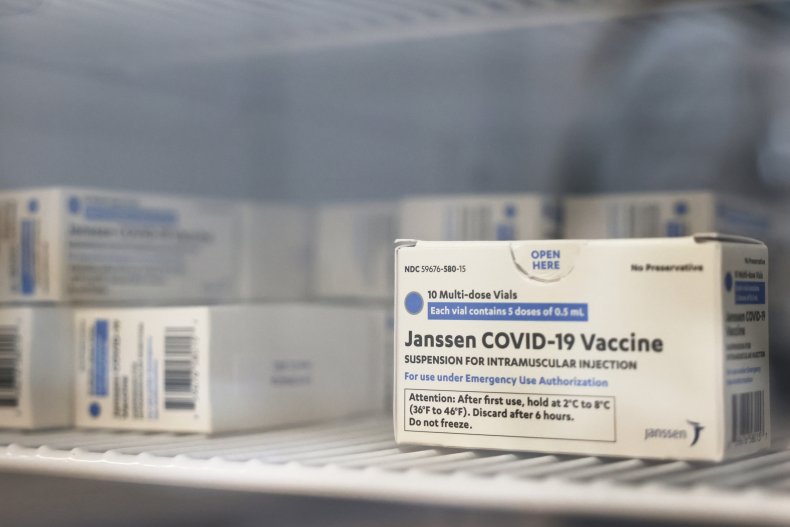What Is Cerebral Venous Sinus Thrombosis? J&J COVID Vaccine Paused Over Blood Clots
Top American health agencies have recommended the rollout of the Johnson & Johnson (Janssen) vaccine be paused as experts investigate six reported cases of a "rare and severe" type of blood clot in people who received the shot.
Officials from the Centers for Disease Control and Prevention (CDC) and the Food and Drug Administration (FDA) confirmed in a joint statement on Tuesday that the handful of known cases were linked to a condition called cerebral venous sinus thrombosis.
What is cerebral venous sinus thrombosis?
The Baltimore, Maryland-based Johns Hopkins Medicine says the condition, also called CVST, is a rare type of stroke that typically affects about 5 in 1 million people every year, and occurs when a blood clot forms in the brain's venous sinuses.
The clot stops blood from draining from the brain which means blood cells "may break and leak blood into the brain tissues, forming a hemorrhage."
It is part of a stroke that can occur in adults and children and even babies in the womb, a fact sheet says. It is also known as cerebral sinovenous thrombosis.
Physical symptoms linked to CVST include headache, blurred vision, fainting or loss of consciousness, seizures and loss of control over movement in a part of the body.
Experts warned that a stroke can damage the brain and nervous system, and requires immediate medical attention. The exact link with the vaccine is now under review.
CVST was also linked to 18 cases in the U.K. and European Economic Area following the rollout of the AstraZeneca COVID vaccine, at least as of March 16, 2021.
Of the 20 million AstraZeneca doses distributed across the regions at the time, experts reviewed seven cases of blood clots in blood vessels, called disseminated intravascular coagulation (DIC) and 18 cases of CVST, but a "causal link" was not proven.
A preliminary review by the European Medicines Agency (EMA) concluded the benefits of the vaccine in combating COVID continued "to outweigh the risk of side effects."
How is CVST treated?
According to Johns Hopkins Medicine, treatments are conducted in a hospital setting, including the use of antibiotics (if an infection is found), controlling pressure inside the head, anticoagulants to stop blood from clotting and possibly even surgery.
It listed some of the potential complications as vision problems, nerve pressure, brain injuries, developmental delays, difficulty moving parts of the body—and death.
The U.S. health agencies said treating CVST is usually based around an anticoagulant drug, but warned that use inside a vaccine center setting could be dangerous.
What did the CDC and FDA say?
The agencies said as of April 12, more than 6.8 million doses of the Johnson & Johnson vaccine were administered in the U.S., with six cases of the clot being found in women between the ages of 18 and 48 who were administered a single dose shot.
Scientists said that in the six identified cases, CVST was found in combination with low levels of blood platelets, or thrombocytopenia. Symptoms occurred between six and 13 days after vaccination. It stressed "adverse events appear to be extremely rare."
Ultimately, the agencies recommended pausing use of the vaccine out of an abundance of caution and to plan for potential treatments needed for the type of clotting.
The CDC/FDA statement read: "People who have received the J&J (Johnson & Johnson) vaccine who develop severe headache, abdominal pain, leg pain, or shortness of breath within three weeks after vaccination should contact their health care provider."
Unlike the COVID shots made by Pfizer-BioNTech or Moderna, the J&J/Janssen vaccine consists of a single dose, recommended for people aged 18 years and older.
Known side effects include fatigue, headache, muscle pain, fever, nausea and chills but clinical trials found that it was 66.3 percent effective at preventing COVID infections two weeks after the dose for a sample of people with no evidence of a prior infection.


